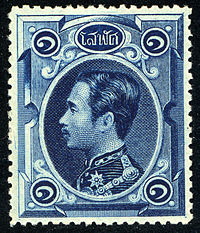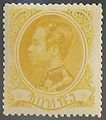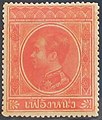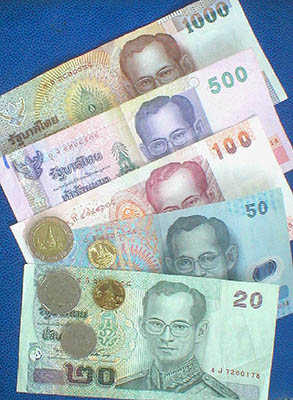
The baht is the official currency of Thailand. It is divided into 100 satang. Prior to decimalisation, the baht was divided into eight feuang, each of eight att. The issuance of currency is the responsibility of the Bank of Thailand. SWIFT ranked the Thai baht as the 10th-most-frequently used world payment currency as of December 2023.

The postal and philatelic history of Canada concerns postage of the territories which have formed Canada. Before Canadian confederation, the colonies of British Columbia and Vancouver Island, Prince Edward Island, Nova Scotia, New Brunswick and Newfoundland issued stamps in their own names. The postal history falls into four major periods: French control (1604–1763), British control (1763–1841), colonial government control (1841–1867), and Canada, since 1867.

Indian postal systems for efficient military and governmental communications had developed long before the arrival of Europeans. When the Portuguese, Dutch, French, Danish and British conquered the Marathas who had already defeated the Mughals, their postal systems existed alongside those of many somewhat independent states. The British East India Company gradually annexed the other powers on the sub-continent and brought into existence a British administrative system over most of modern-day India, with a need to establish and maintain both official and commercial mail systems.

This is a survey of the postage stamps and postal history of the Falkland Islands.

India Post is an Indian government-operated postal system in India, and is the trade name of the Department of Post under the Ministry of Communications. Generally known as the Post Office, it is the most widely distributed postal system in the world. Warren Hastings had taken initiative under East India Company to start the Postal Service in the country in 1766. It was initially established under the name "Company Mail". It was later modified into a service under the Crown in 1854 by Lord Dalhousie. Dalhousie introduced uniform postage rates and helped to pass the India Post Office Act 1854 which significantly improved upon 1837 Post Office act which had introduced regular post offices in India. It created the position Director General of Post for the whole country.
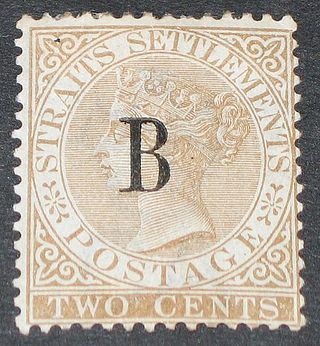
This is a survey of the postage stamps and postal history of the British post office in Bangkok, Thailand.

Debsirindra, formerly Ramphoei Phamaraphirom, born Ramphoei Siriwong, was the second consort of King Mongkut, and mother of King Chulalongkorn.

The postal history of Malta began in the early modern period, when pre-adhesive mail was delivered to foreign destinations by privately owned ships for a fee. The earliest known letter from Malta, sent during the rule of the Order of St John, is dated 1532. The first formal postal service on the islands was established by the Order in 1708, with the post office being located at the Casa del Commun Tesoro in Valletta. The first postal markings on mail appeared later on in the 18th century.

Thailand Post (THP), formerly part of the Communications Authority of Thailand until 2003, is a state enterprise that provides postal services in Thailand.

This is a survey of the postage stamps and postal history of Estonia. The stamps of Estonia are issued by the postal administration Eesti Post which is the country's only provider of universal postal services.

The postal history of Turkey and its predecessor state, the Ottoman Empire, dates to the 18th century when foreign countries maintained courier services through their consular offices in the Empire. Although delayed in the development of its own postal service, in 1863 the Ottoman Empire became the second independent country in Asia to issue adhesive postage stamps, and in 1875, it became a founding member of the General Postal Union, soon to become the Universal Postal Union. The Ottoman Empire became the Republic of Turkey in 1923, and in the following years, its postal service became more modernized and efficient and its postage stamps expertly designed and manufactured.
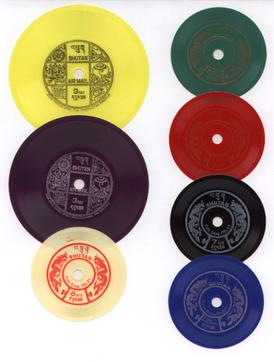
The first postage stamps of Bhutan were issued in 1962, the same year that the first motorable road was opened. Before that there was a mail delivery system in place for official mail using mail runners, and between 1955 and 1962 revenue stamps were accepted as payment for internal mail. With the opening up of Bhutan in the early 1960s, a formal postal system was introduced.
The history of Thai money used as a medium of exchange and to settle accounts before the adoption of Thai baht coins and banknotes include novel designs and forms. For Thai people, money was considered as the symbol of civilization. Currency itself reflected faith in religion, culture, the customs and traditions of each era and also serve as a record of the development of Thailand.

Chandrmondol Sobhon Bhagiawati, the Princess Wisutkrasat also known as Princess Fa-ying or Somdetch Chow Fa-ying was a Princess of Siam and daughter of King Mongkut and Queen Debsirindra.
The year 1875 was the 94th year of the Rattanakosin Kingdom of Siam. It was the eighth year in the reign of King Chulalongkorn.

Praisaniyakarn, written as Praisaneeyakan is the original location of the Post Department, which was Thailand’s first postal office. The office stood on the eastern bank of Chao Phraya River, at the mouth of Khlong Ong Ang in Phra Nakhon side near the area of Pak Khlong Talat, right on the south of Memorial Bridge. It is a three-storey striking white Western-style building.
The 20 baht note (20฿) is currently the lowest-in-value baht banknote and has been used since 1892. The 17th series notes are currently in circulation having been introduced in 2018. The 15th, 16th and 16th (special) series are commonly used as well. The front side shows a portrait of Vajiralongkorn, the current head of the state or the king. The reverse depicts Kings Phra Buddha Yodfa Chulaloke and Phra Buddha Loetla Nabhalai.

Buraphaphirom Palace was a palace situated in Bangkok, Thailand, and was built to be the residence of Prince Bhanurangsi Savangwongse, the origin of the royal family surname Bhanubandhu.



